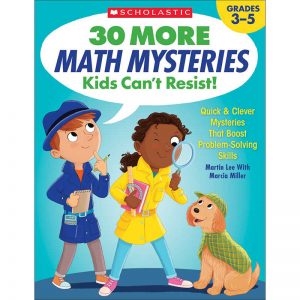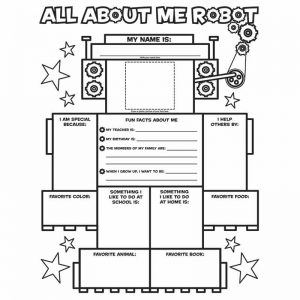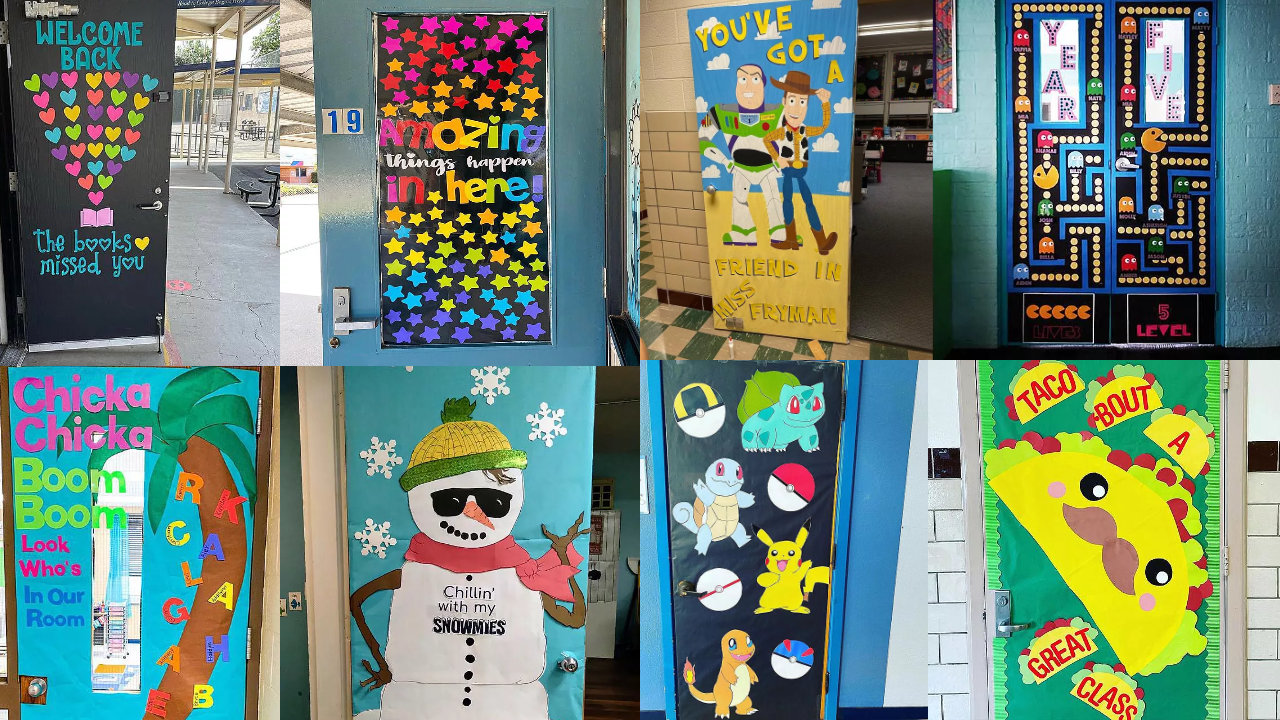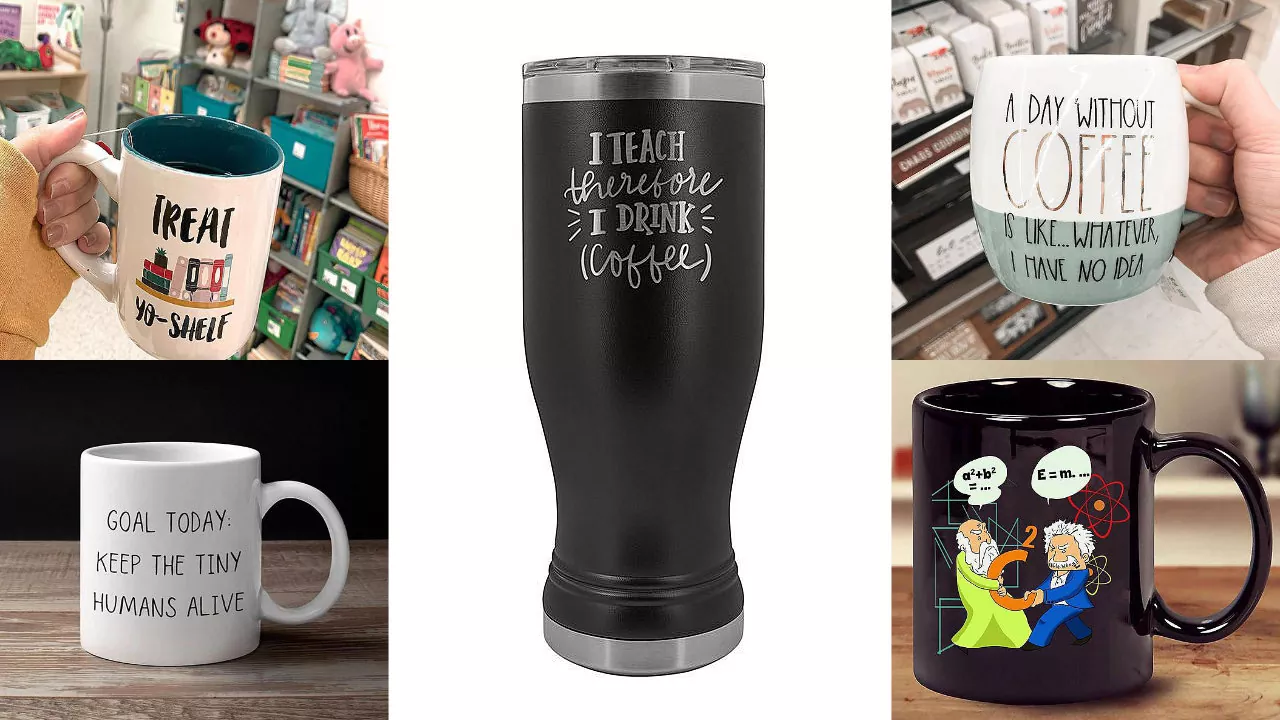Introduction
Children are full of wonder for the world around them, from the puddles they splash in to the rocks and other treasures that sometimes fill their pockets. The world is one big classroom for these young learners, as they collect, organize, display, and study data they gather on a daily basis. The data collection lessons and mini-books in the pages that follow encourage children’s natural love of exploring and learning, and their desire to create. Approaching learning as a process, these mini-books foster interactive learning and engage all learners, challenging every student to make new discoveries and build skills and learn concepts in math, literacy, science, and more. (For information on how the content of the mini-books connects with the standards, see page 5.)
Research conducted with kindergartners and second graders found that children can engage in research with text, when they are given support.
(Korkeamaki, Tiainen, and Dreher, 1998; Korkeamaki and Dreher, 2000; as cited in Duke and Bennett-Armistead, 2003)
WORKSHEET & Sample PDF Activity
Sample PDF Activity
Each of the 15 mini-books encourages children to use active learning and hands-on experiences as they construct knowledge about the world. A lesson for each mini-book provides step-by-step support for guiding children in conducting their research and analyzing data, to create books that they can revisit again and again. Children not only learn about specific concepts, such as standard and nonstandard measurement and properties of water, but also hone reading and writing skills. You will find the mini-books help to scaffold children’s learning in the area of conducting research and recording their observations. As children pose questions and gather data about themselves and their surroundings, they begin to make sense of their world, forming connections between math, science, and social studies concepts and deepening understandings.
How to Make and Use the Mini-Books
The mini-books are fun and easy to make, and gratifying for emergent readers to use. Simply photocopy a class set of all pages of the mini-book. Cut along the dashed lines to separate the mini-book pages. Put each set of pages in order and staple to bind. The mini-books are now ready to use.
The mini-books are designed for use over the course of one or two lessons, depending upon students’ age and ability level, and can be used in any order to help you meet the needs of your science, math, and social studies curriculum. You may want to customize some of the mini-books by adding details—for example, “Our Favorite Authors” (page 76) includes space for you to add another author to a class survey. Other ideas for customizing the mini-books include adding extra pages for students to gather more data, or changing the activities slightly to better accommodate your students.
Preview the books with students before beginning the data collection activities. As you read the mini-book aloud, discuss new vocabulary and concepts. In the lesson pages, you’ll find more ideas for teaching with the mini-books, including:
• step-by-step plans for using the mini-books with children.
• ideas for extending students’ learning.
• book links to enrich learning experiences.
Incorporating Graphic Organizers
Many of the data collection mini-books incorporate the use of graphic organizers, such as charts, tables, and graphs. For example, in “Measure the School” (page 25), children complete a chart, then use the information in it to make comparisons about the number of steps it takes to get from the classroom to various places in the school. In “How Are Trees Alike? How Are Trees Different?” (page 33), children observe trees and use charts to organize and compare information about identifying characteristics. And in “Our Favorite Authors” (page 76), children graph results of a survey, then use the graph as a tool to assess their data.
Research supports the use of graphic organizers as effective instructional tools. Using graphic organizers has been shown to improve student learning, including in reading comprehension, development and organization of ideas, and retention and recall of information. (Institute for the Advancement of Research in Education, 2003)
After students have completed their data collection with a mini-book, use repeated readings with partners, small groups, or individually to allow students to demonstrate the new information they have learned and improve their reading skills. Children can also color the minibook illustrations. Place completed books on display in the classroom reading center or other centers, as appropriate. Invite children to explore their classmates’ minibooks to make comparisons and deepen understanding.
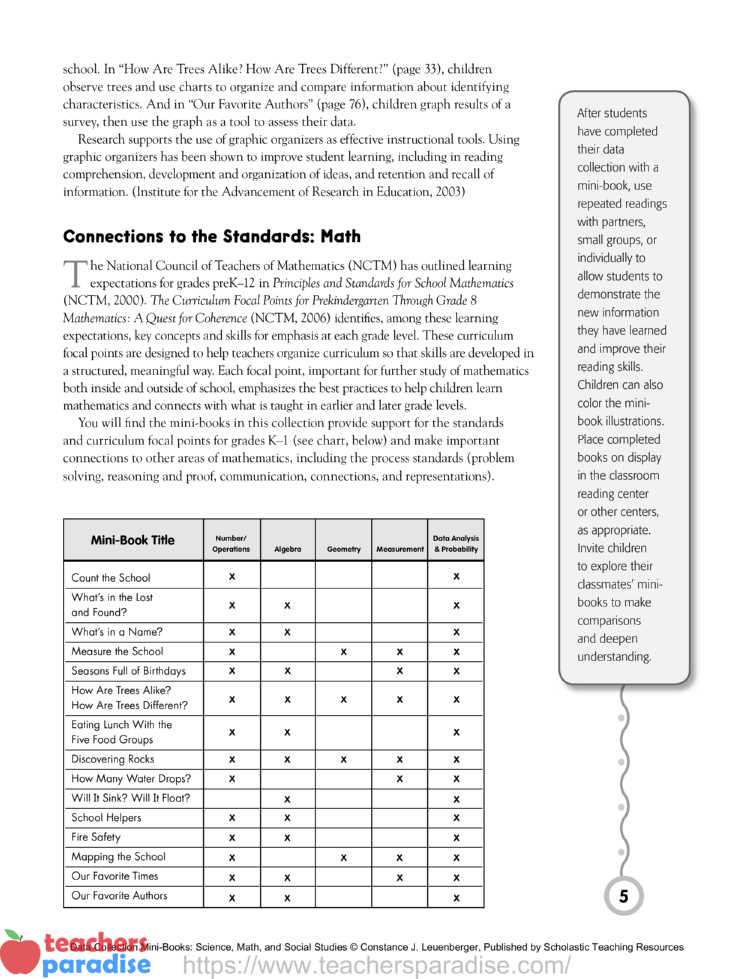
Connections to the Standards: Math
The National Council of Teachers of Mathematics (NCTM) has outlined learning expectations for grades preK–12 in Principles and Standards for School Mathematics (NCTM, 2000). The Curriculum Focal Points for Prekindergarten Through Grade 8 Mathematics: A Quest for Coherence (NCTM, 2006) identifies, among these learning expectations, key concepts and skills for emphasis at each grade level. These curriculum focal points are designed to help teachers organize curriculum so that skills are developed in a structured, meaningful way. Each focal point, important for further study of mathematics both inside and outside of school, emphasizes the best practices to help children learn mathematics and connects with what is taught in earlier and later grade levels.
You will find the mini-books in this collection provide support for the standards and curriculum focal points for grades K–1 (see chart, below) and make important connections to other areas of mathematics, including the process standards (problem solving, reasoning and proof, communication, connections, and representations).
Connections to the Standards: Language Arts
In addition to supporting the math standards, the mini-books are aligned with the following reading and writing standards outlined by Mid-continent Research for Education and Learning (McREL), an organization that collects and synthesizes national and state K–12 curriculum standards.
Reading Standards
• Uses meaning clues to aid comprehension and make predictions about content.
• Understands level-appropriate sight words and vocabulary.
• Uses reading skills and strategies to understand a variety of informational texts.
• Relates new information to prior knowledge and experience.
Writing Standards
• Uses drawings to express thoughts, feelings, and ideas.
• Writes for different purposes.
• Gathers and uses information for research purposes.
• Generates questions about topics of personal interest.
• Uses a variety of sources to gather information.
Connections to the Standards: Science
The mini-books also connect with a number of the National Science Education Content Standards, the criteria intended to guide the quality of science teaching and learning in this country. The standards describe which science concepts children at different grade levels should understand and skills they should develop.
• Science as Inquiry: Scientific investigations involve asking and answering a question, observing, making predictions, comparing and contrasting, classifying, using tools to measure, gathering data, and recording and communicating results.
• Life Science: Plants have different structures that serve different functions in growth and survival.
• Science in Personal & Social Perspectives: Nutrition is essential to health; students should understand how eating a variety of foods contributes to health.
• Earth Science: Earth materials include solid rocks that have different physical properties.
• Physical Science: Substances such as liquids have many observable properties including size, shape, and color, and the ability to react with other substances.
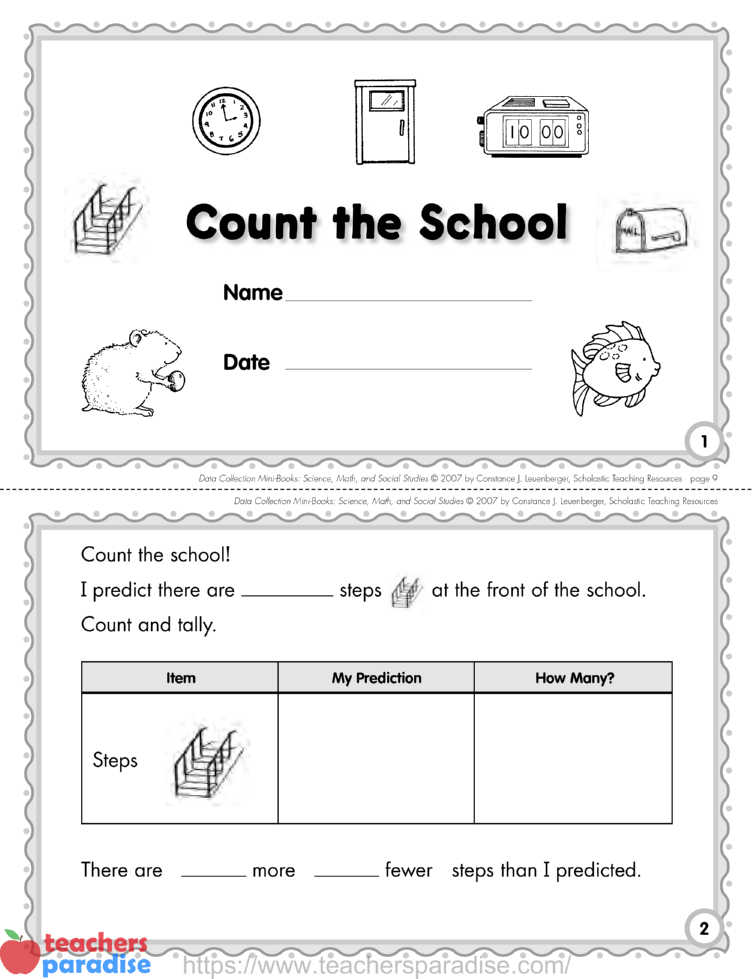
Mini-Lesson: Tallying
Several of the mini-books, for example, “Count the School” (page 8), and “Seasons Full of Birthdays” (page 29), have children use tallying as a way to keep track of the data they collect. Tallying also lets children practice one-to-one correspondence in counting. Before children use any of the mini-books that involve tallying, introduce them to this useful skill.
- Begin by modeling tallying during a morning meeting (or other opening exercise). Tally how many days you have been in school for the month. For each day, invite students to notice how you form the tally mark – either by making a vertical line or a diagonal line. Reinforce that the first four lines in a bundle of five are evenly spaced vertical lines, with every fifth line drawn diagonally across the first four (see right). If you tally ten or more days, draw a circle around every two sets of five to visually indicate 10.
- When students begin to understand the process, invite the helper of the day to take over adding the tally mark for the day. Each day, invite children to explain why the tally is vertical or diagonal and why.
- Later, give students the opportunity to try their own hand at tallying things in their environment. In the beginning stages, it is easiest to use tallies with concrete objects. This allows children to actually see the one-to-one correspondence between a tally mark and the thing they are tallying (such as the number of children or windows in the classroom). It’s important that students understand that each tally mark matches up with the item they are tallying (so five windows should easily be seen as five tally marks, and so on).
- Provide further practice by weaving a tallying exercise into other parts of the day. When students arrive in the morning, for example, have them use tallies to indicate their lunch choice. Invite students to circle sets of tallies to show 10.
Getting Started
This mini-book activity works best when children pair up. In advance, let staff members know that children will be traveling around the building counting items. Be sure to read the mini-book ahead of time and make any adjustments that may be necessary for the book to work at your school.
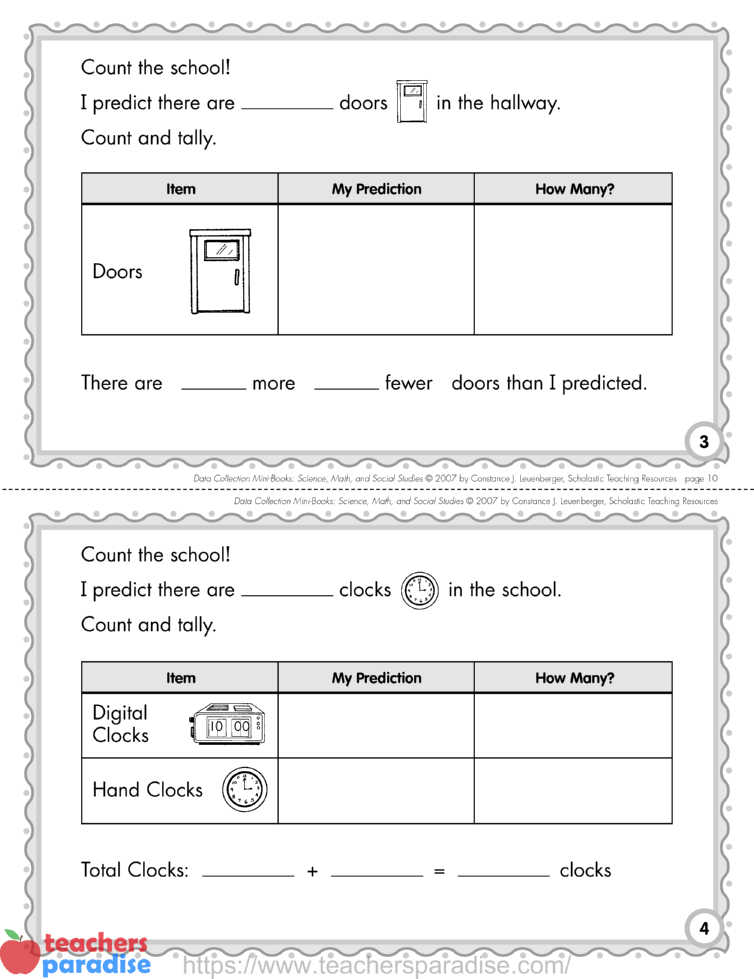
Count the School
Children travel the school predicting and counting, and later organize and compare the data they’ve collected.
Teaching With the Mini-Book
- It’s easier with this mini-book to ask children to make all their predictions first, then count the various items around their school. Beginning on page 2, invite children to predict and record how many steps are at the front of the school.
- Invite children to predict how many doors, clocks, mailboxes, and pets there are in the school, and ask them to record their predictions on pages 3 through 6.
- Explain to students that the best way to keep track of counting a number of things is to make tally marks (see mini-lesson, page 7). Encourage children to make tally marks in the “How Many?” cells on the charts, totaling them when they are finished.
- Group children in pairs (or any other way that works best), and have them walk around the school to count the items listed on pages 2 through 6 of the minibook. When the counting is complete, students can return to the classroom to complete the mini-book.
- Invite children to fill in the chart on page 7 to compare their predictions with the actual number of items they counted. Using the chart on page 7, encourage children to complete the mini-book (page 8) by recording what they counted the most and fewest of, as well as writing about something they learned that surprised them.
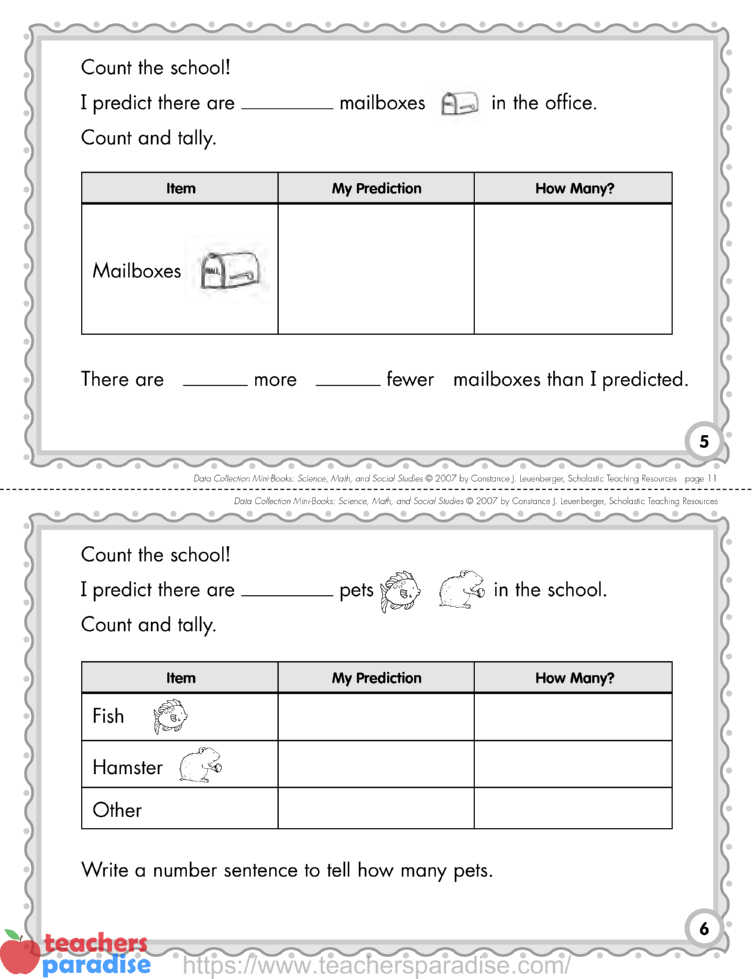
Extending Students’ Learning
Count the Classroom: Generate a class book based on the mini-book. During a shared writing time, invite students to come up with things they would like to count in the classroom. Turn these ideas into a class-made mini-book called “Count the Classroom.” Make a copy for each child and encourage students to complete it. Students can compare the data they collected to learn more.
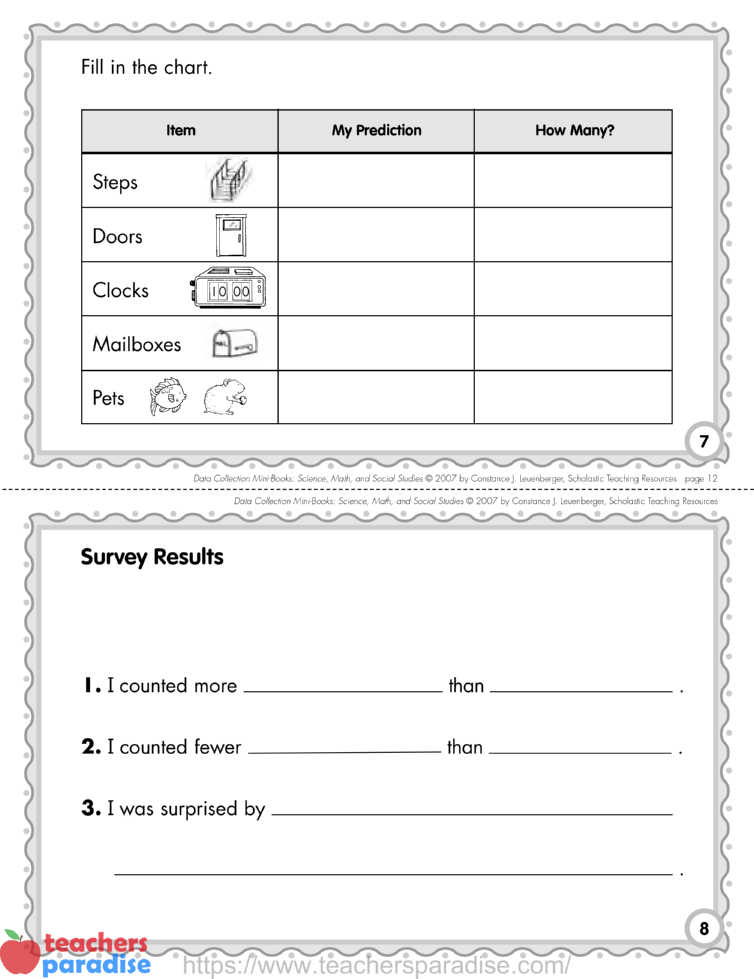
Table of Contents
Introduction – 4
How to Make and Use the Mini-Books – 4
Incorporating Graphic Organizers – 4
Connections to the Standards: Math, Language Arts, and Science – 5
Mini-Lesson: Tallying – 7
Bibliography – 7
Math Mini-Books
Count the School
Lesson – 8
Reproducible Mini-Book – 9–12
What’s in the Lost and Found?
Lesson – 13
Reproducible Mini-Book – 14–19
What’s in a Name?
Lesson – 20
Reproducible Mini-Book – 21–24
Measure the School
Lesson – 25
Reproducible Mini-Book – 26–28
Seasons Full of Birthdays
Lesson – 29
Reproducible Mini-Book – 30–32
Science Mini-Books
How Are Trees Alike? How Are Trees Different?
Lesson – 33
Reproducible Mini-Book – 34–37
Eating Lunch With the Five Food Groups
Lesson – 38
Reproducible Mini-Book – 39–43
Discovering Rocks
Lesson – 44
Reproducible Mini-Book – 45–48
How Many Water Drops?
Lesson – 49
Reproducible Mini-Book – 50–53
Will It Sink? Will It Float?
Lesson – 54
Reproducible Mini-Book – 55–57
Social Studies Mini-Books
School Helpers
Lesson – 58
Reproducible Mini-Book – 59–61
Fire Safety
Lesson – 62
Reproducible Mini-Book – 63–65
Mapping the School
Lesson – 66
Reproducible Mini-Book – 67–69
Our Favorite Times
Lesson – 70
Reproducible Mini-Book – 71–75
Our Favorite Authors
Lesson – 76
Reproducible Mini-Book – 77–80

